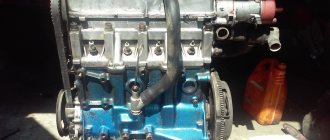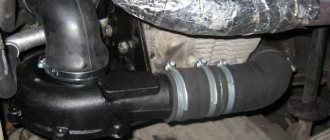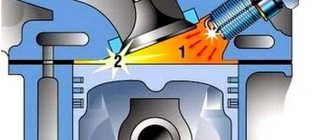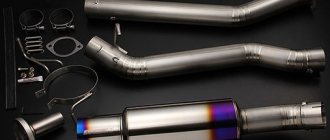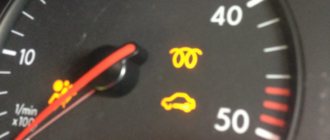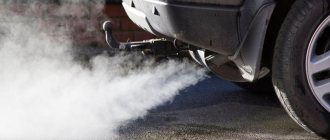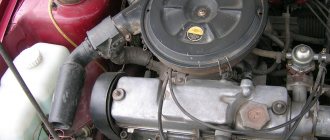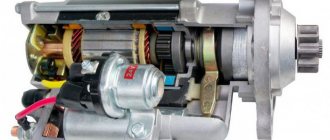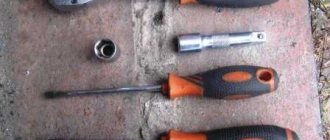Tuning the VAZ 2106 engine
The VAZ "Six" began production in 1976. This model has long been obsolete both in appearance and technical characteristics. However, today there are many supporters of using such cars. Some owners try to keep the car in its original form, others equip it with modern components and mechanisms. One of the main components that undergo tuning is the engine. It is on its modifications that we will dwell in more detail.
Cylinder block boring
The VAZ 2106 engine does not differ in power, because it ranges from 64 to 75 liters with a volume of 1.3 to 1.6 liters, depending on the installed power unit. One of the most common engine modifications is an extension of the cylinder block, which allows for a larger cylinder bore and more power. The reaming process involves removing a layer of metal from the inner surface of the cylinders. However, it is necessary to understand that excessive boredom will lead to thinning of the walls and a decrease in the reliability and life of the engine. Thus, a serial power unit with a volume of 1.6 liters and a cylinder diameter of 79 mm can be drilled to 82 mm, giving a volume of 1.7 liters. With such changes, reliability indicators practically do not deteriorate.
Extreme enthusiasts can, at their own risk, increase the cylinders to 84 mm, because no one knows how long such an engine will last.
The drilling process is carried out on special equipment (drilling machine), although there are craftsmen who carry out this procedure practically in the garage, while the accuracy remains in question.
At the end of the procedure, the pistons are inserted into a block whose characteristics correspond to the new cylinder dimensions. In general, block drilling consists of the following main stages:
- Dismantling the engine from the car.
- Complete disassembly of the power unit.
- Drilling the cylinder block according to the desired parameters.
- Assembly of the mechanism with replacement of pistons.
- Installing the engine on a car.
Video: how to bore a cylinder block
Replacing the crankshaft
The VAZ Six engine is equipped with a VAZ 2103 crankshaft with a piston stroke of 80 mm. In addition to increasing the cylinder diameter, you can increase the piston stroke, thereby improving engine performance. For the purposes under consideration, the engine is equipped with a VAZ 21213 crankshaft with a piston stroke of 84 mm. Thus, it will be possible to increase the volume to 1.65 liters (1646 cc). In addition, this crankshaft has eight counterweights instead of four, which has a positive effect on dynamic characteristics.
Refinement of the intake and exhaust system
Anyone who has a “six” or another classic Zhiguli model can, if desired, upgrade the cylinder head and manifolds. The main goal is to increase power. This is achieved by reducing the resistance when supplying the air-fuel mixture to the inlet, that is, by removing roughness. To carry out the procedure, the cylinder head must be removed from the vehicle and disassembled. After this, it is recommended to wash the installation. For these purposes, you can use modern means or ordinary kerosene or diesel fuel. From the required list of tools and materials you will need:
- drill with adjustable speed;
- drill;
- flexible beam;
- cones;
- leather of different grains;
- rags;
- sensors;
- drain valve and a set of washers for holes larger than 32 mm;
- graphite lubricant;
- vice.
Intake manifold
It is better to start the procedure for modifying the intake tract with the manifold, through which channels will subsequently be drilled into the cylinder head. We carry out the work as follows:
- We grab the commutator in a vice, wrap a rag around a suitable drill or attachment and apply 60-80 grit sandpaper on it.
Refinement of the cylinder head
In addition to the intake manifold, it is necessary to modify the channels in the cylinder head itself, since there is a ledge between the manifold and the cylinder head that prevents the free passage of the air-fuel mixture through the cylinders. On classic heads this transition can reach 3 mm. Modifying the head comes down to the following steps:
- To determine where it is necessary to remove part of the metal, apply lubricant or plasticine to the plane of the head at the points of contact of the collector. After this, it will be clearly visible where and how much to chop.
In addition to bore boring, the cylinder head can be modified by installing a tuned camshaft. Most often, car owners install a shaft from a VAZ 21213, less often - sports elements of the “Estonian” type and the like.
Replacing the stock camshaft allows you to change the valve timing. As a result, the engine cylinders are better filled with the combustible mixture and are also cleared of exhaust gases, which increases the power of the power unit. The camshaft is changed in the same way as during a normal repair, that is, no special tools are required.
Video: modification of the cylinder head and intake manifold
An exhaust manifold
The essence of modifying the exhaust manifold is the same as in the intake manifold. The only difference is that the channel needs to be sharpened to no more than 31mm. Many people don't pay attention to the exhaust manifold because it is made of cast iron and is difficult to work with, but not impossible. It should be taken into account that the collector channel should have a diameter slightly larger than the head. In the same cylinder head we carry out grinding as described above and it is recommended to grind the bushings along a cone.
Ignition system
If you take a serious approach to fine-tuning the power unit, you cannot help but install a non-contact ignition system (BSI) instead of the traditional contact one. BSZ has a number of undeniable advantages:
- more powerful spark;
- precise opening of the ignition circuit;
- high reliability and durability.
Equipping the VAZ 2106 with contactless ignition makes the engine more stable and eliminates the need to periodically adjust constantly lit contacts, since BSZ simply does not have them. Instead of a group of contacts, a Hall sensor is used. An important point is that in winter it is much easier to start an engine with contactless ignition. To install the BSZ on “this” you will need to purchase a kit consisting of the following elements:
- distributor;
- candle;
- high voltage cables;
- ignition coil;
- switch;
- wiring.
The sequence of actions for replacing the contact ignition system on the BSZ is as follows:
- We remove the old spark plug wires and the ignition distributor cap. We install the distributor slider perpendicular to the axis of the car, turning the starter so that it points to the first cylinder of the engine.
After installing the BSZ, it will be necessary to adjust the ignition while the car is moving.
Carburetor
On the VAZ 2106, the Ozone carburetor was used more often. To upgrade the power unit, many car owners equip it with another device - DAAZ-21053 (Solex). This unit is economical and offers better vehicle dynamics. In order for the engine to develop maximum power, instead of one carburetor, two are sometimes installed. In this way, it is possible to achieve a more uniform supply of the fuel and air mixture to the cylinders, which affects the increase in torque and increase in power of the power plant. The main elements and components for this conversion are:
- two Solex or Ozone carburetors";
- a pair of Oka intake manifolds;
- hoses, tees, throttle valves.
All the work comes down to disassembling the standard intake manifold and installing two new ones, with the latter being adjusted so that they fit tightly to the cylinder head. Modification of the collectors involves removing protruding parts using a milling cutter. After this, the carburetors are installed and the same adjustment is made, that is, the adjusting screws are unscrewed by the same number of turns. To simultaneously open the shock absorbers in both carburetors, a bracket is made that will connect to the accelerator pedal.
Preparing for installation
After purchasing all the necessary spare parts, you can begin upgrading. First you need to dismantle unnecessary equipment, in particular:
- loosen and remove the generator belt;
- remove the crankshaft pulley and camshaft drive cover;
- dismantle the distributor, fuel pump and switch;
- remove the carburetor and air filter;
- dismantle the old cylinder head along with the manifolds;
- unscrew the exhaust manifold and coolant distributor tee from the cylinder head (located in front of the manifolds in the direction of travel of the car);
- dismantle the accelerator drive rods, the gas pedal and unnecessary wires (to the coolant sensor, ECXX, distributor);
- remove the gas tank (if it will be replaced).
Next, preparatory activities should be carried out.
- Drill a hole on the ebb of the coolant distributor tee, screw a new antifreeze temperature sensor into it and install the tee on the new cylinder head.
- Secure the TPS in its proper place in the throttle valve assembly.
- Close the holes in the block left after removing the mechanical fuel pump and distributor with plugs.
- Extend the return line to the fuel tank, if there is none.
- Attach the electric fuel pump mounting bracket in the trunk or under the bottom and embed the fuel pump into the fuel supply hose.
Compressor or turbine for the “six”
You can increase engine power by installing a compressor or turbine, but first you need to understand what is needed for this. First of all, you need to understand that it is possible to install a turbine on a carburetor engine due to its design features, but this is quite problematic. The nuances include both large material and time costs. The most important points to consider when equipping a car with a turbine:
- Mandatory installation of an intercooler. This part is a kind of radiator, only it cools the air. Because the turbine generates high pressure and the air is heated, it must be cooled to achieve the installation effect. If you don't use an intercooler, there will be an effect, but much less.
If you are not an avid racing driver, you should take a closer look at the compressor, which has the following differences from the turbine:
- Does not cause high blood pressure.
- There is no need to install an intercooler.
- You can equip the VAZ engine with a carburetor.
To equip a VAZ 2106 with the unit in question, you will need a compressor kit, a kit that includes everything necessary for converting the engine (pipes, fasteners, compressor, etc.).
The product is installed in accordance with the manufacturer's instructions.
Video: installing a compressor using the “five” as an example
16-valve engine on VAZ 2106
One of the options for tuning a “six” is replacing an 8-valve engine with a 16-valve engine, for example, from a VAZ 2112. However, the whole process does not end with a banal replacement of engines. Quite serious, painstaking and expensive work awaits us. The main stages of such improvement are:
- We install a fuel injection system on a 16-valve engine.
- We adjust the support on the engine mounts (classic mounts are used).
- We change the crown on the flywheel, for which we knock off the old one, and in its place we put a VAZ 2101 part with preheating. Then, on the engine side of the flywheel, we grind the bead (you will have to contact a turner). This is necessary for the starter to move into place. After finishing work with the flywheel, we perform balancing.
Based on the points listed for installing a 16-valve unit, you can understand and preliminary assess your financial and technical capabilities. In the absence of the necessary components and knowledge, you will have to look for outside help and “pour” additional funds into this hobby.
Video: installing a 16-valve engine on a “classic”
The “six” engine lends itself well to boosting and you don’t need to be a specialist with extensive experience to increase the drive volume. By gradually improving your car, you will eventually be able to get a pretty “peppy” car that will make you feel safer on the road.
In this article we will look at installing an injector on a VAZ 2106-2107 and other classics. Why is it necessary to make such a replacement, some may think, there may be several reasons, and the first important one is that the carburetor is already from the last century, constantly requires driver intervention, since the idle speed becomes more or less, or the speed begins to fluctuate , fuel consumption increases and so on, many problems associated with the carburetor can still be listed, since ignition in carburetor engines leaves much to be desired. Everything is better on injection engines, they have already been checked electronically and if something is wrong, then you don’t need to guess what exactly is broken, go for diagnostics and find out all the problems with the engine.
Now let's figure out what we need to install the injector ourselves on a VAZ 2106-2107, the first is the engine itself from any injection classic, you can buy it for any disassembly, it will not be very expensive, which means you need a gas tank with an electric fuel pump from an injection classic, together with it you need to buy a return pipe going from the engine to the gas tank, you will also need accessories such as an intake receiver, a manifold, an old generator, it will go well with an old starter and a control unit with wiring (oblique), you also need a radiator from the injector. You may also need all sorts of little things, but this will already be known during installation. The installation itself is carried out in the usual way, as when replacing an engine with a classic one, which is not particularly difficult. It will also be necessary to replace the tachometer, since the tachometer on the injector is powered by the ECU and they have different voltage values. After installation, you will enjoy driving an injection engine and forget about unpleasant problems such as the carburetor. If you have any questions, ask us in the comments. Also read other interesting articles about this on our website.
The operation of a carburetor engine is accompanied by several problems (breakdowns). After all, the carburetor needs to be periodically adjusted, the idle speed often fluctuates, and in severe frost there may be problems with starting the engine. Also, to prepare the air-fuel mixture (FA) with the correct ratio, it is necessary to carefully adjust the position of the screw according to the quality and quantity of the mixture. In addition, the level in the bowl affects fuel consumption. In addition to these nuances, there are problems with ignition and the accuracy of its installation. Therefore, car owners modify carburetor engines and install an injector with their own hands.
Carburetor. Advantages and disadvantages
Let's start with the negative points. These include:
- Such engines have not been installed on production cars for a long time. In Europe, due to environmental requirements, carburetors are blacklisted. That is, they are prohibited because they heavily pollute the atmosphere;
- At high speeds, the engine's capabilities drop significantly. Torque does not reach the desired levels. But at low speeds it is effective and allows you to accelerate well from zero to hundreds;
- When overtaking, the carburetor is a pain. It is problematic to overtake cars normally and confidently. Especially considering the power of the carburetor nines;
- High fuel consumption when compared with injection engines. On average, a nine with a carburetor in normal mode consumes about 8.5-9 liters of fuel per 100 kilometers;
- The air damper is controlled manually. The exception is some versions of the latest samples, where automatic devices have been installed. Some motorists claim that manually controlling the throttle in winter has its advantages, as it allows you to feel the engine. But only experienced drivers can understand this.
Nine carburetor
But let's not just talk about the bad. The VAZ 2109 with a carburetor also has positive qualities:
- The cost of a carburetor is much cheaper than an injection engine;
- Engine maintenance costs less, and the work itself is easier to perform if you repair it yourself;
- Fans of carburetors claim that the absence of control units and microcontrollers is an undeniable advantage. Although one can argue with him;
- If the engine fails even 100 kilometers from the nearest settlement or service station, it is not a problem for experienced drivers, since repairs can be carried out even in the field. But this will require the availability of appropriate tools and passenger assistance.
Swapping a couple of armored pipes and doing a purge is a simple option for quickly repairing a carburetor yourself. The injection engine does not understand such tricks.
Injector. Advantages and disadvantages
In short, all the advantages of the injector are the disadvantages of the carburetor, and all the disadvantages are the advantages of the carburetor.
Injection nine
The key features of injection engines include:
- Injectors are more environmentally friendly and meet the requirements for emissions of harmful substances;
- Although the torque is insufficient at low speeds, it makes overtaking easier at high speeds. The engine seems to get a second wind;
- Injector maintenance costs are higher;
- For normal operation of such an engine, clean fuel is needed. The carburetor “feeds” on everything;
- To check faults, it is necessary to perform diagnostics, which is time-consuming and expensive;
- The injector consumes less fuel. The average is 6-7 liters per 100 kilometers;
- Almost all systems function through computer control, therefore, when working correctly, the engine operates as efficiently and economically as possible;
- It is possible to install HBO on the injector. But with a carburetor, such a step is fraught with a number of difficulties.
Concept
How does an injector work?
The word “injector” comes from the Latin word “Inicio,” which means “to throw out.” Essentially, an injector is a pump that pushes out liquid or gas under pressure.
The VAZ injector is an injector controlled by an electronic unit (ECU.
To supply the required amount of fuel assemblies into the combustion chamber of each cylinder, it is necessary to know the mass of air and fuel. To do this, appropriate sensors are installed on the car, the signal of which is sent to the ECU.
The device of a simple injector
The simplest car injector includes:
- Sensors;
- Electric fuel pump;
- Controller (ECU);
- Pressure regulator;
- The actual injector (nozzle).
Sensors are needed to measure parameters such as:
- Air mass;
- Throttle position;
- Air temperature;
- Fuel consumption;
- Crankshaft position.
The ECU is the brain of the fuel injection system. It checks the injectors according to a specific algorithm, processes signals from sensors and performs the necessary calculations.
The electric fuel pump forces gasoline to the pressure regulator, which maintains constant pressure in the system.
The injector is a solenoid valve that is activated when control voltage is supplied from the ECU. The moment the injector opens determines the amount of fuel and air supplied to the combustion chamber. The fuel assembly feed channel of the injector is designed in such a way as to ensure effective atomization and distribution of the mixture in the cylinder.
Let's sum it up
Modern cars all have fuel injection. Carburetor cars, which were too voracious and very undynamic, have not been produced for a long time. Today, the injector has become the main type of fuel injection in gasoline engines. Until automotive technology comes up with anything more interesting, it is worth using this particular equipment option. When choosing an injector for your car, you can select equipment removed from a high-quality foreign car. This will provide even more interesting opportunities for operating transport and will actively change the attitude towards technology.
It is important to use high-quality equipment, otherwise installing an injector will turn out to be another problem for your car. If you want to operate your vehicle without problems, you need to get rid of the carburetor as a relic of the past. This unit will not be the most reliable and far from the most successful for every motorist. So buy injection equipment and modernize your vehicle. However, it is worth following innovations in laws and checking whether such conversion options are included in the list of prohibited ones. What do you think about installing an injector instead of a carburetor?
How to install an injector on a VAZ 2106
Installing an injector on a VAZ is accompanied, first of all, by purchasing the necessary spare parts. There are special kits for sale for the VAZ 2106. Just buy and install. A description of the installation process is usually included in the package. This installation is the simplest option for the VAZ 2106. However, buying the entire kit will be quite expensive. In this case, of course, there is no need to guess what, how and where to put it.
Another option is to purchase all the parts separately.
Preparation
Installation of the injector is carried out after preparing the VAZ 2106:
- Removing the carburetor;
- Remove the carburetor thread;
- Ignition coil;
- Switch (if any);
- Drain the coolant;
- Disconnect the intake and exhaust manifolds;
- We change the forced air supply of the radiator to electric;
- We will replace the gas tank with another one with an electric fuel pump;
- Remove the distributor and fuel pump;
- We install plugs in their place.
Before purchasing all the equipment, you need to decide which controller will be installed on the car. Depending on this we acquire everything else.
Equipment installation
Installing a crankshaft position sensor (CPS) requires replacing the VAZ 2106 engine cover with a new one with counterflow. To do this, you will first need to remove the crankshaft pulley. When installing a new cover, all sealing parts are changed; it will be necessary to expand the cylinder head or replace it with a new one from Niva injection, since the carburetor has smaller intake channels than the injection one. You will also need to install a receiver.
Next, we attach the receiver, the ramp with pipes, and the exhaust manifold. Don't forget the spacers between the joints. We attach the throttle valve to the receiver and also need to install the ignition module and the knock sensor (DS). On some engine models, installing the latter can be difficult, since it must be located as close to the cylinders as possible.
The fuel filter must be inserted into the gap in the intake pipe. We choose it from those available for sale. It all depends on your preferences.
The speed sensor is located between the gearbox and the speedometer cable input. It will be more convenient to extend the fuel return pipe along the bottom of the VAZ 2106 car.
Features of the injector, list of equipment for replacement
Before installing the injector yourself, you should first of all turn to theory. The vast majority of VAZ 2106 cars (modifications 21060, 21061, 21064, 21065) were equipped with carburetor naturally-aspirated engines of 1.45 and 1.6 liters with the same cylinder head (cylinder head) - 2101.
This cylinder head is not suitable for installing an injector on it, since it has inlet holes of inappropriate shape and does not have studs for attaching the intake manifold to the receiver. Of course, you can remake it for cost-saving reasons, but if you do not have special knowledge, then it is better to purchase a ready-made cylinder head assembly from the modernized Niva - 21214.
The Niva's engine is not much different from the 2106 engine, so its cylinder head is ideally suited to the design characteristics.
In case of financial problems, you can purchase an empty cylinder head and replace the valves and other things from the old head into it. But again, this requires knowledge and experience. In addition to the cylinder head, you will need to purchase the following equipment from the VAZ 21214.
- The ramp is assembled with nozzles and pressure regulator.
- The receiver is complete with a throttle assembly and idle air control.
- Intake manifold.
- Gasket for intake and exhaust manifolds.
- Receiver gasket.
- Front engine cover with a hole for the crankshaft position sensor (CPS).
- Crankshaft pulley with space for DPKV.
- DPKV.
- Throttle position sensor (TPS).
- Instant air flow sensor (MAF).
- Antifreeze temperature sensor.
- Speed sensor.
- Knock sensor (DS).
- Accelerator pedal with drive cable.
Carburetor vs injector
A faulty injector is much more difficult to fix than a carburetor. You need to connect to the controller, and for this you have a special program. Otherwise, you will have to go to a car repair shop and pay for it. The injector consists of several parts distributed under the hood. In addition, the quality of the fuel plays an important role. A large number of sensors requires large wiring. Sometimes the injectors become clogged or the solenoid winding burns out. Interference and interference affecting the wiring distorts the signals, so where it is laid plays an important role.
Undoubtedly, the injector accurately doses the mixture into the combustion chambers and prepares it with the required composition. Fuel economy in this case is natural. Also in winter the car starts better; you don’t need to frequently adjust the idle speed. The car becomes more responsive and powerful.
The carburetor can be repaired almost to the knee. It is easy to remove, disassemble and reassemble. If you don't have a source of compressed air nearby, you can blow it out with your mouth using a hose. If you have the appropriate knowledge, adapting will not be difficult.
Install an injector or leave a carburetor at your discretion!
Difficulties in reworking
Since the work is quite labor-intensive and takes a lot of time, we recommend performing the steps in stages. The quality of components and their assembly play an important role during work. Beginners may have difficulty securing some elements, so it is better to call for help from a familiar car service specialist or a person who has replaced a carburetor with an injector before.
Replacing a carburetor with an injector will require you to be careful and careful. You will need to replace a lot of parts, and this is quite difficult for a beginner to do. But if you wish and strictly follow the instructions, you can perform a really serious modernization of your car and save a lot on car service costs.
This is interesting: Transportation of pets

